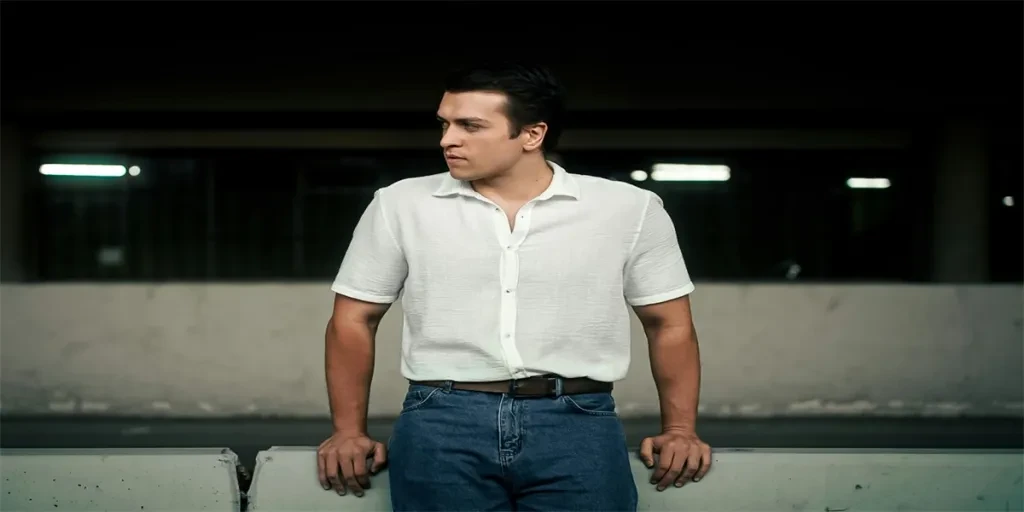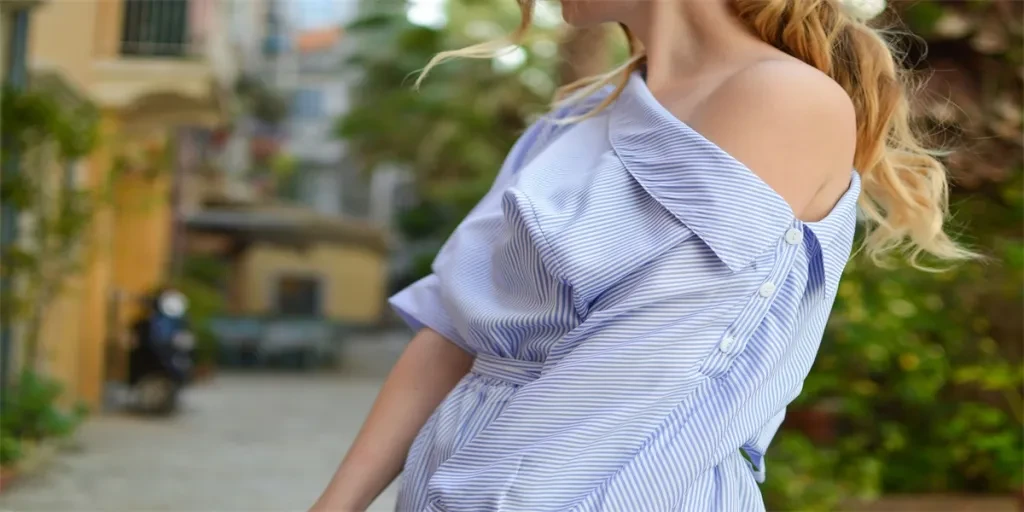Heavyweight shirts have become a significant trend in the apparel and accessories industry. Known for their durability, comfort, and versatile style, these shirts are gaining popularity across various demographics. This article delves into the market overview, highlighting global demand, key players, and the economic and cultural influences driving this trend.
Table of Contents:
– Market Overview
– The Fabric and Texture of Heavyweight Shirts
– Design and Functionality
– Seasonal and Cultural Influences
Market Overview

Global Demand for Heavyweight Shirts
The global market for shirts, including heavyweight variants, is experiencing steady growth. In 2024, the revenue in the shirts market worldwide is projected to reach $79.00 billion, with an annual growth rate of 2.15% from 2024 to 2028, according to Statista. This growth is driven by increasing consumer preference for durable and high-quality apparel. The United States leads in revenue generation, expected to hit $16.44 billion in 2024. The per capita revenue for shirts is estimated at $10.19, indicating a robust market presence.
Key Players and Brands in the Market
Several key players dominate the heavyweight shirt market, leveraging their brand reputation and extensive distribution networks. Companies like Levi’s, Ralph Lauren, and Hugo Boss are at the forefront, offering a range of heavyweight shirts that cater to diverse consumer preferences. These brands are known for their commitment to quality and innovation, which has helped them maintain a competitive edge in the market.
Economic and Cultural Influences on Heavyweight Shirt Trends
Economic factors play a crucial role in shaping the trends in the heavyweight shirt market. The steady growth in GDP per capita and consumer spending has positively impacted the demand for premium apparel. Additionally, cultural influences, such as the global shift towards casual and comfortable clothing, have further fueled the popularity of heavyweight shirts. Countries like Italy and France, known for their fashion-forward consumers, continue to show strong demand for high-quality, tailored shirts despite the casual attire trend.
The Fabric and Texture of Heavyweight Shirts

Popular Materials Used in Heavyweight Shirts
Heavyweight shirts are distinguished by their robust and durable fabrics, which provide both comfort and longevity. The most popular materials used in these shirts include cotton, flannel, and denim. Cotton, particularly heavyweight cotton, is a staple in the production of these shirts due to its breathability and softness. It is also highly durable, making it ideal for everyday wear. Flannel, another common material, is known for its warmth and comfort, making it a popular choice for colder seasons. Denim, with its rugged texture and durability, is often used in workwear and casual shirts, providing a stylish yet practical option.
In recent years, there has been a growing interest in sustainable and eco-friendly materials. According to a professional report, brands are increasingly incorporating organic cotton and recycled fabrics into their collections. This shift not only caters to the environmentally conscious consumer but also enhances the overall quality and appeal of the shirts.
The Role of Texture in Comfort and Durability
The texture of a heavyweight shirt plays a crucial role in its comfort and durability. A well-textured fabric can enhance the shirt’s aesthetic appeal while also providing a comfortable fit. For instance, a shirt with a brushed cotton finish offers a soft and smooth texture, making it comfortable to wear for extended periods. On the other hand, a shirt with a rugged texture, such as denim, provides a more durable and long-lasting option.
Texture also affects the shirt’s breathability and moisture-wicking properties. A shirt with a smooth texture allows for better air circulation, keeping the wearer cool and dry. Conversely, a shirt with a rough texture may trap heat and moisture, making it less comfortable in warmer climates. Therefore, selecting the right texture is essential for ensuring both comfort and durability.
Design and Functionality

Innovative Design Elements in Heavyweight Shirts
Design innovation is a key factor in the appeal of heavyweight shirts. Designers are constantly experimenting with new elements to create unique and stylish pieces. One notable trend is the use of contrast stitching and decorative elements, such as embroidery and appliqués. These details add a touch of individuality and craftsmanship to the shirts, making them stand out in the market.
Another innovative design element is the incorporation of functional features, such as multiple pockets and reinforced seams. These features not only enhance the shirt’s usability but also add to its overall aesthetic. For example, a shirt with multiple pockets can provide convenient storage options, while reinforced seams ensure durability and longevity.
Functional Features that Enhance Usability
Functional features are essential in enhancing the usability of heavyweight shirts. One such feature is the use of moisture-wicking fabrics, which help to keep the wearer dry and comfortable. This is particularly important for shirts designed for outdoor activities or workwear, where the wearer may be exposed to varying weather conditions.
Another functional feature is the inclusion of adjustable cuffs and collars. These elements allow for a customizable fit, ensuring maximum comfort and flexibility. Additionally, some shirts come with built-in ventilation panels, which provide extra breathability and help to regulate body temperature.
The use of durable materials and construction techniques is also crucial in enhancing the shirt’s usability. For instance, double-stitched seams and reinforced buttons ensure that the shirt can withstand regular wear and tear, making it a reliable and long-lasting option.
Seasonal and Cultural Influences

How Seasonality Affects Heavyweight Shirt Trends
Seasonality plays a significant role in shaping heavyweight shirt trends. During the colder months, there is a higher demand for shirts made from warm and insulating materials, such as flannel and wool. These fabrics provide the necessary warmth and comfort, making them ideal for winter wear. In contrast, during the warmer months, lightweight and breathable fabrics, such as cotton and linen, are more popular.
Seasonal trends also influence the color and pattern choices for heavyweight shirts. In the fall and winter, darker and more muted colors, such as navy, burgundy, and olive, are prevalent. These colors not only complement the season’s aesthetic but also provide a versatile and timeless look. In the spring and summer, brighter and more vibrant colors, such as pastel shades and bold prints, are more common, reflecting the season’s lively and energetic vibe.
Cultural Heritage and Its Impact on Heavyweight Shirt Designs
Cultural heritage has a profound impact on the design and appeal of heavyweight shirts. Traditional patterns and motifs, such as plaids and checks, are often incorporated into modern designs, creating a fusion of classic and contemporary styles. This blend of old and new appeals to a wide range of consumers, from those who appreciate the nostalgia of traditional designs to those who seek a modern and trendy look.
Cultural influences also extend to the choice of materials and construction techniques. For instance, Japanese denim, known for its superior quality and craftsmanship, is highly sought after in the production of heavyweight shirts. Similarly, traditional weaving techniques, such as those used in Indian khadi fabrics, add a unique and authentic touch to the shirts.
The resurgence of retro and vintage styles has also brought cultural heritage to the forefront of fashion. According to a professional report, there is a renewed interest in the “prep boy” aesthetic, characterized by classic patterns and preppy details. This trend is supported by the growing popularity of baseball caps and checks, which add a nostalgic and timeless appeal to the shirts.
Conclusion
The heavyweight shirt market is evolving, driven by innovative designs, functional features, and cultural influences. As consumers continue to seek durable and stylish options, the demand for high-quality materials and craftsmanship will remain strong. Looking ahead, the integration of sustainable practices and eco-friendly materials will play a crucial role in shaping the future of heavyweight shirts, catering to the growing demand for environmentally conscious fashion.





 বাংলা
বাংলা Nederlands
Nederlands English
English Français
Français Deutsch
Deutsch हिन्दी
हिन्दी Bahasa Indonesia
Bahasa Indonesia Italiano
Italiano 日本語
日本語 한국어
한국어 Bahasa Melayu
Bahasa Melayu മലയാളം
മലയാളം پښتو
پښتو فارسی
فارسی Polski
Polski Português
Português Русский
Русский Español
Español Kiswahili
Kiswahili ไทย
ไทย Türkçe
Türkçe اردو
اردو Tiếng Việt
Tiếng Việt isiXhosa
isiXhosa Zulu
Zulu